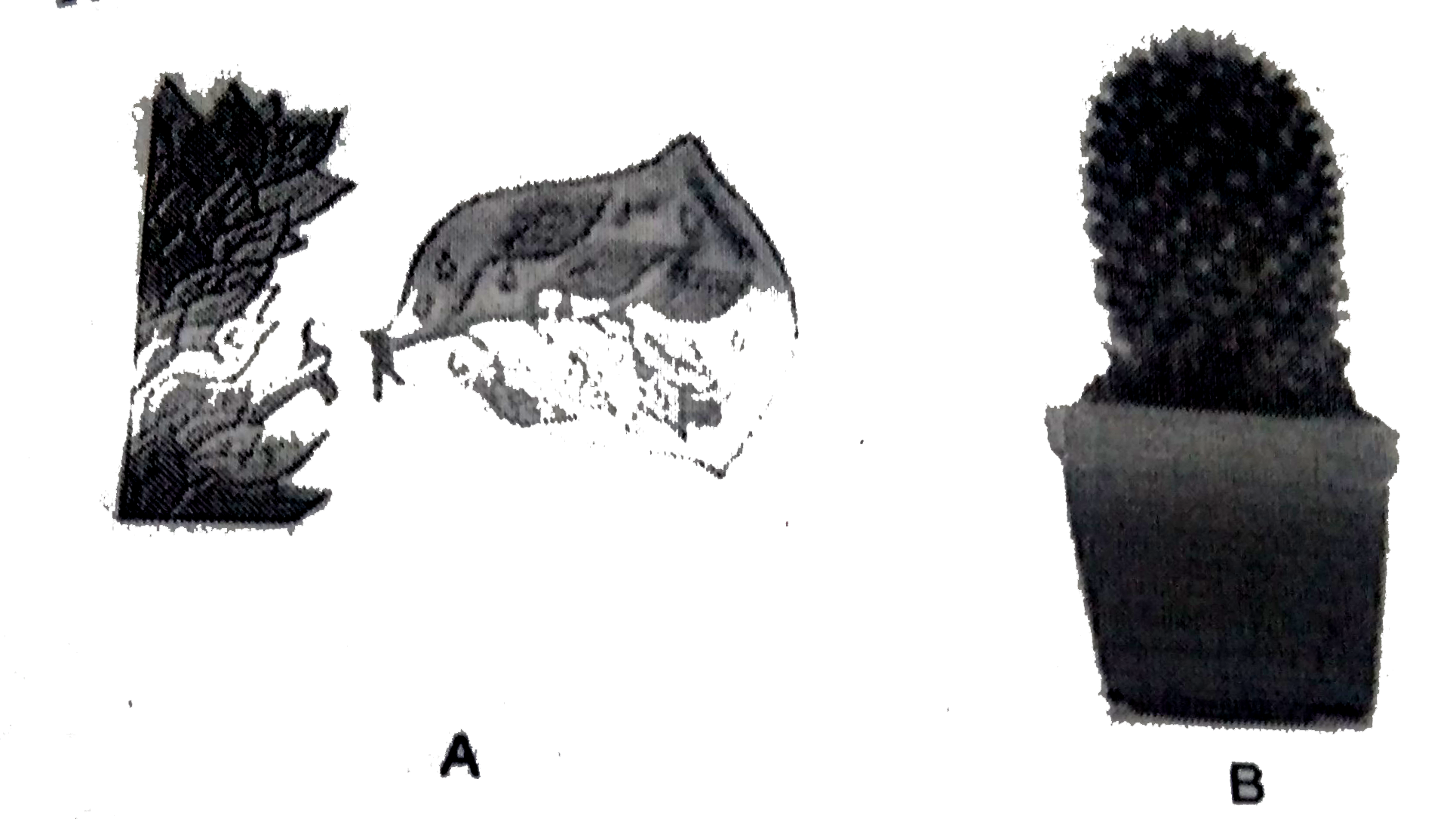Identify the adaptation of plants in desert habitat.
Waxy coating on leaves
Cone shaped trees
Sloping branches
Thick and fleshy stems
The correct Answer is:D
Step-by-Step Solution
1. Understanding the Desert Habitat:
- The desert is characterized by extreme temperatures, low rainfall, and a scarcity of water. Plants that grow in this environment have developed specific adaptations to survive.
2. Identifying Key Adaptations:
- Waxy Coating: Many desert plants have a thick, waxy coating on their leaves. This coating helps to reduce water loss by preventing evaporation.
- Thick and Fleshy Stems: These plants often have large, fleshy stems that can store water. This adaptation allows them to survive long periods without rainfall.
- Thorns Instead of Leaves: In some desert plants, leaves are modified into thorns. This reduces water loss since thorns have a smaller surface area compared to leaves.
- Deep Roots: Desert plants typically have deep root systems that can reach underground water sources. This adaptation helps them absorb moisture that is not available on the surface.
3. Conclusion:
- The adaptations of plants in desert habitats include a waxy coating on leaves, thick and fleshy stems for water storage, thorns to minimize water loss, and deep roots to access groundwater.
- The desert is characterized by extreme temperatures, low rainfall, and a scarcity of water. Plants that grow in this environment have developed specific adaptations to survive.
- Waxy Coating: Many desert plants have a thick, waxy coating on their leaves. This coating helps to reduce water loss by preventing evaporation.
- Thick and Fleshy Stems: These plants often have large, fleshy stems that can store water. This adaptation allows them to survive long periods without rainfall.
- Thorns Instead of Leaves: In some desert plants, leaves are modified into thorns. This reduces water loss since thorns have a smaller surface area compared to leaves.
- Deep Roots: Desert plants typically have deep root systems that can reach underground water sources. This adaptation helps them absorb moisture that is not available on the surface.
- The adaptations of plants in desert habitats include a waxy coating on leaves, thick and fleshy stems for water storage, thorns to minimize water loss, and deep roots to access groundwater.
Topper's Solved these Questions
- ENVIRONMENT- AN ETERNAL GIFT TO MANKINDBOOK - PEARSON IIT JEE FOUNDATIONCHAPTER - ENVIRONMENT- AN ETERNAL GIFT TO MANKINDEXERCISE - TEST YOUR CONCEPTS (SHORT ANSWER TYPE QUESTIONS) (Give scientific reasons.)
5 Videos
- ENVIRONMENT- AN ETERNAL GIFT TO MANKINDBOOK - PEARSON IIT JEE FOUNDATIONCHAPTER - ENVIRONMENT- AN ETERNAL GIFT TO MANKINDEXERCISE - TEST YOUR CONCEPTS (SHORT ANSWER TYPE QUESTIONS)
19 Videos
- ENVIRONMENT- AN ETERNAL GIFT TO MANKINDBOOK - PEARSON IIT JEE FOUNDATIONCHAPTER - ENVIRONMENT- AN ETERNAL GIFT TO MANKINDEXERCISE - TEST YOUR CONCEPTS ( VERY SHORT ANSWER TYPE QUESTIONS) (FILL IN THE BLANKS)
21 Videos
- HEALTH - OUR GREATEST WEALTHBOOK - PEARSON IIT JEE FOUNDATIONCHAPTER - HEALTH - OUR GREATEST WEALTHEXERCISE - CROSSWORD
1 Videos
Similar Questions

Answer the following questions based on the above figure.
List out the adaptations of the plant B for the habitat.
View Solution
Answer the following questions based on the above figure.
a) Identify the plant B and predict the habitat.
b) What does the activity shown in the above diagram (refer figure A) indicate?
c) List out the adaptation of the plant B for the habitat.
View Solution
Knowledge Check
Identify the odd combination of the habitat and the particular animal concerned
APeriyar ................. ElephantBRann of Kutch ......... .. Wild AssCDachigam National Park ...... Snow LeopardDSunderbans ........... Bengal tigerIdentify the correct pair of an animal and its habitat region
AElephant - RanthamboreBFlamingo - Ranno of KutchCWild ass - DachigamDGreat Indian Bustard - AssamIdentify the odd combination of the habitat and the particular animal concerned
ADachigam National Park - Snow LeopardBSunderbans - Bengal TigerCPeriyar - ElephantDRann of Kutch - Wild Ass
Which one is an anatomical adaption in plants growing in dry habitats?
View SolutionDesert adaptations.
View SolutionWhat are adaptations? State the adaptations found in desert plants to minimize water loss through transpiration.
View Solution
Answer the following questions based on the above figure.
Identify the plant B and predict the habitat.
View SolutionEnlist adaptations shown by plants in grasslands.
View Solution
